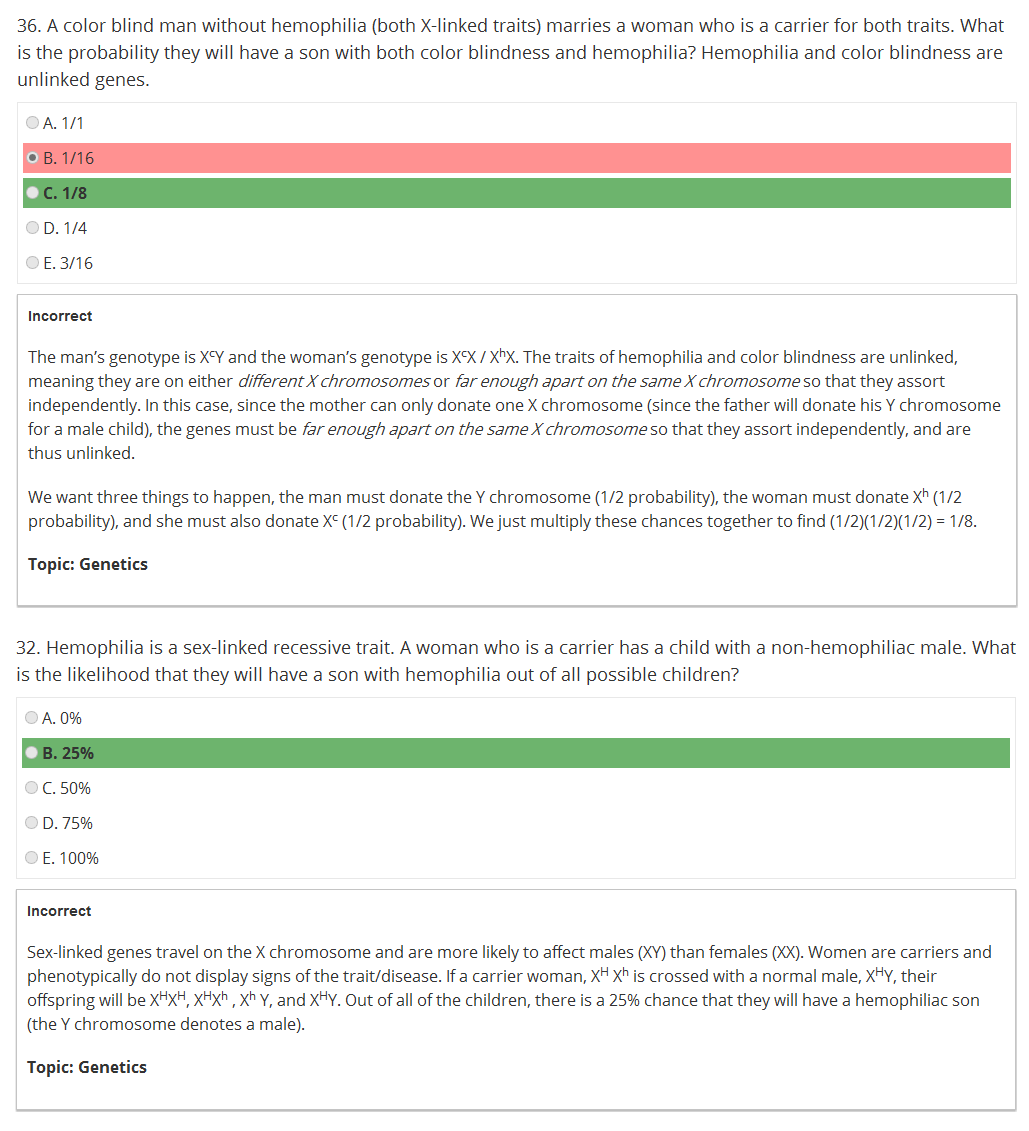- Joined
- Jan 14, 2014
- Messages
- 238
- Reaction score
- 193
So when would I use a dominant and recessive letter for sex-linked questions over just one letter?
Ex: Found them from Bootcamp Test #2 and #1 for Biology respectively.

For the first one, why is the hemophiliac woman carrier xh x while in the second one the hemophiliac woman carrier is xH xh? So confusing!
So if xh x is considered a woman carrier, would xh y be a male carrier?
This is my current understanding:
xH xH = no disease
xH xh = carrier for disease
xh xh = have disease
xH y = no disease
xh y = have disease
However, the first question is saying
xh x = carrier
so would that make
xh y = carrier?
Ex: Found them from Bootcamp Test #2 and #1 for Biology respectively.

For the first one, why is the hemophiliac woman carrier xh x while in the second one the hemophiliac woman carrier is xH xh? So confusing!
So if xh x is considered a woman carrier, would xh y be a male carrier?
This is my current understanding:
xH xH = no disease
xH xh = carrier for disease
xh xh = have disease
xH y = no disease
xh y = have disease
However, the first question is saying
xh x = carrier
so would that make
xh y = carrier?
Last edited:
